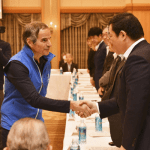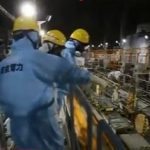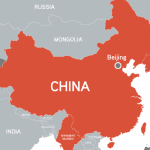Tokyo Electric Power Company has begun releasing more treated radioactive water from Japan’s stricken Fukushima Daiichi nuclear power plant, as part of a strategy that has sparked controversy with neighboring China.
According to the report, the discharge plan began in August as a critical step toward decommissioning the facility, which suffered meltdowns after being slammed by a tsunami in 2011, resulting in the world’s worst nuclear disaster since Chernobyl 25 years earlier.
Tepco stated in a statement that the release, which began on Thursday morning, will last around 17 days and will dump approximately 7,800 cubic meters) of water into the Pacific Ocean.
Despite the fact that nuclear authorities, including the United Nations watchdog, have concluded the plan will have no effect on humanity or the environment, it has enraged some neighbors, particularly China.
Meanwhile, the initial release late in August triggered a blanket ban on Japanese seafood products by China, Hong Kong, and Macau. There was also a deluge of harassment calls to Japanese businesses and offices believed to originate from China.
The utility had received more than 6,000 calls from abroad between August 24 and 27, Junichi Matsumoto, the official overseeing the release, told a news conference on Wednesday.
Tritium levels in surrounding waters since the initial discharge have met pre-determined standards, tests by Tepco show.
Despite the reassurances, a group of five people demonstrated outside the Japanese consulate in Hong Kong to demand an immediate halt to the discharge plan.
“Maybe Japan can explore various alternative approaches to engage the international community and find better ways to address this issue with us,” one of the protesters, Pang Yap-ming, said.














